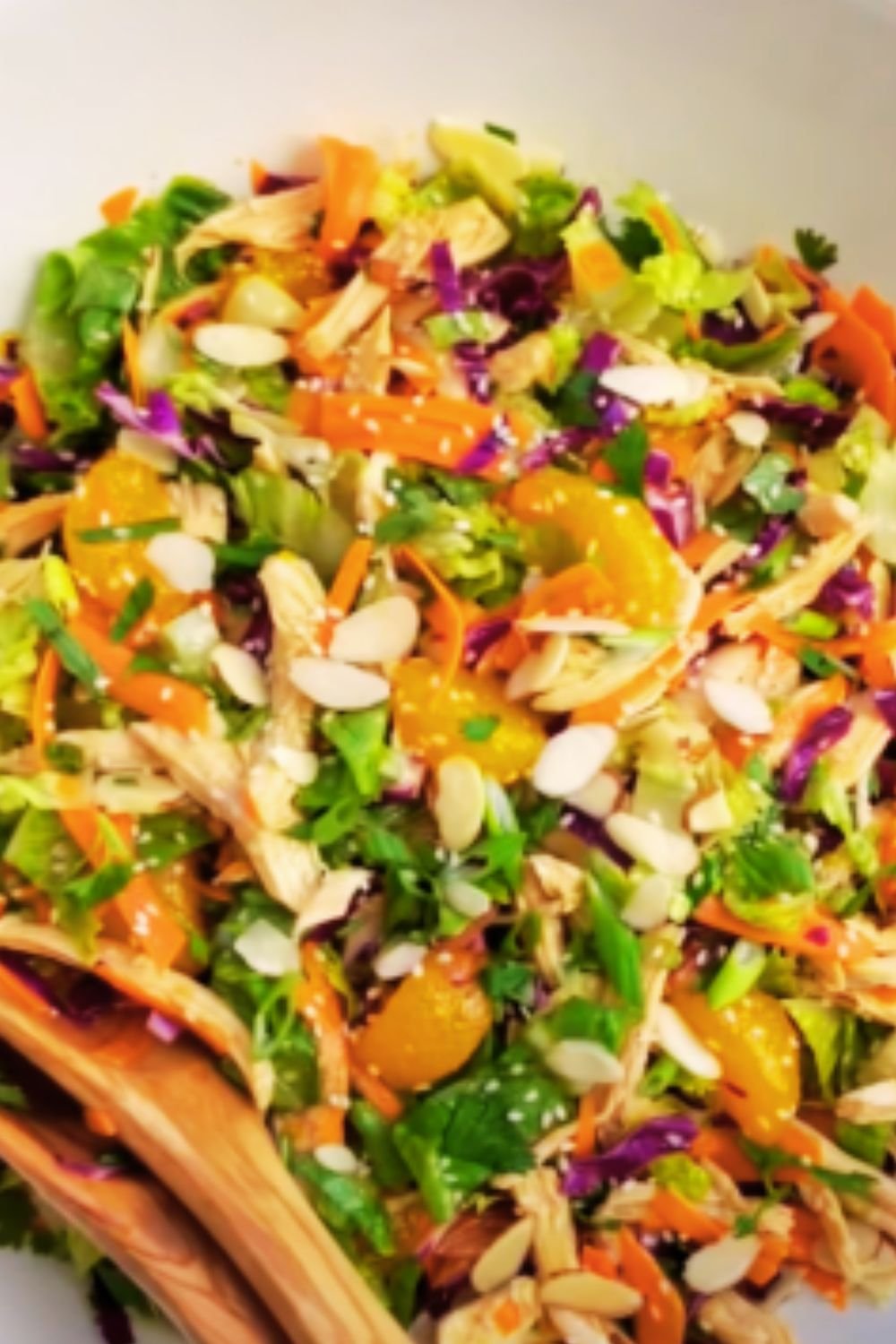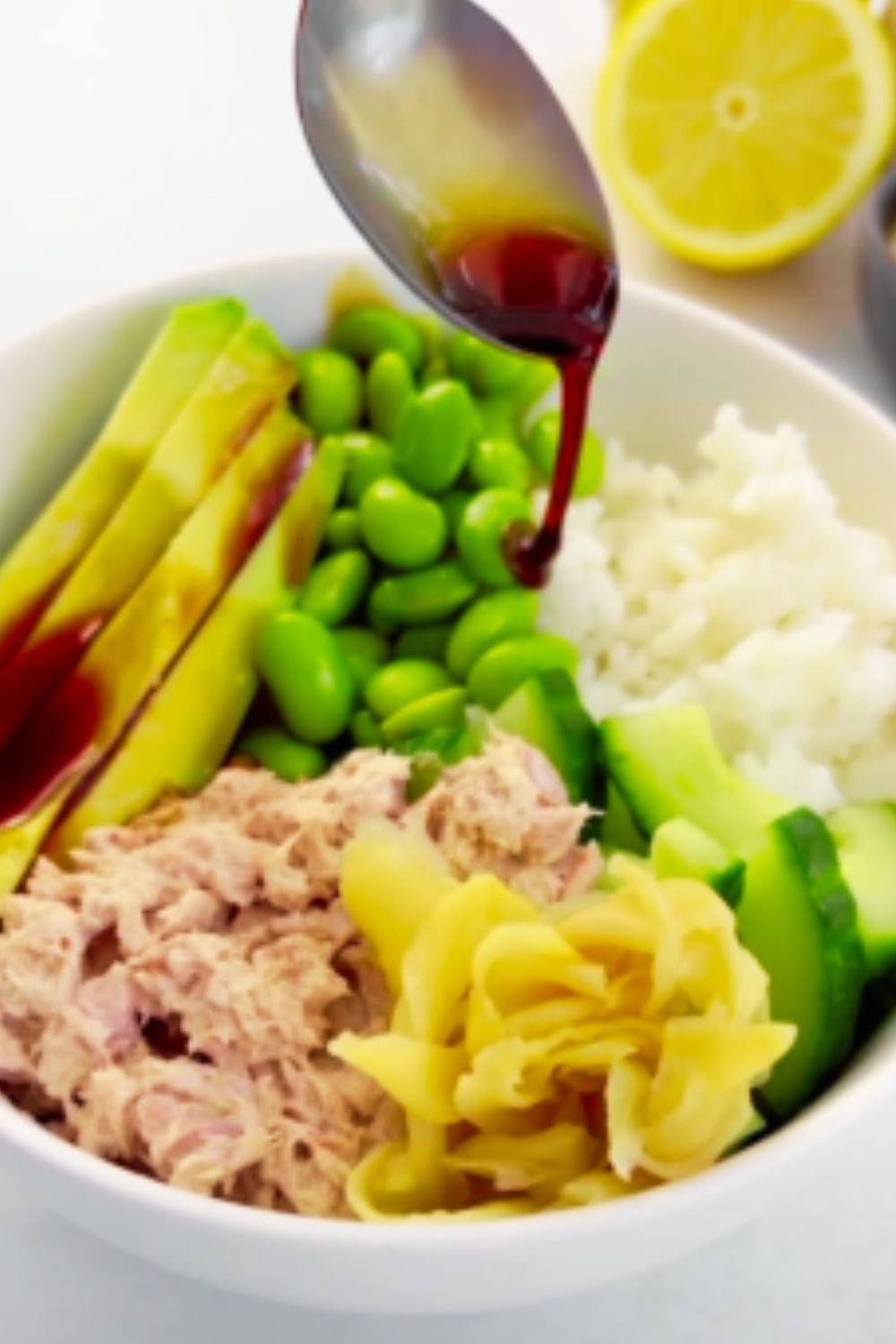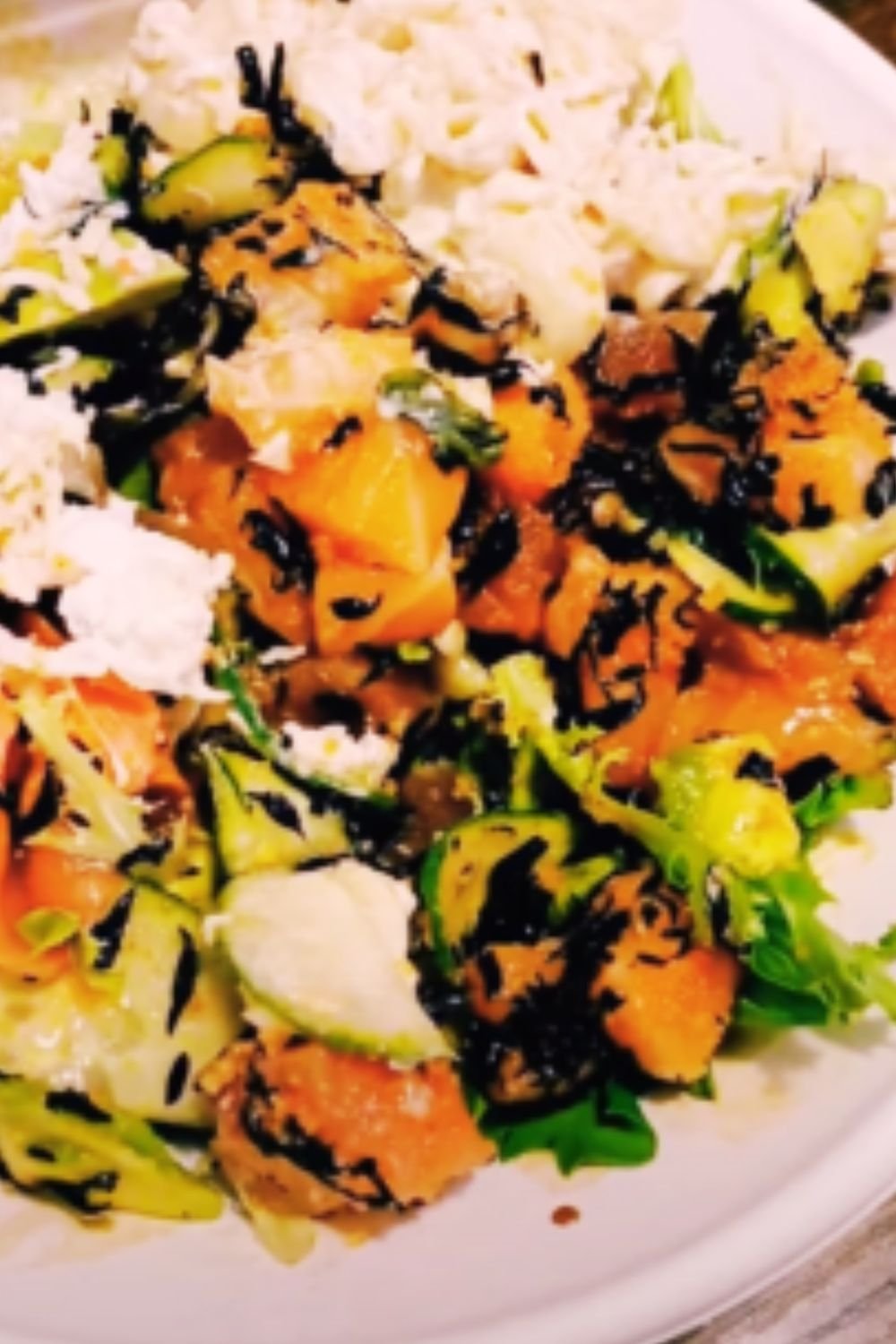There’s something magical about the perfect coleslaw. That satisfying crunch, the balance of tangy and sweet, and that refreshing quality that makes it the ideal side dish for almost any meal. Today, I’m excited to share my absolute favorite twist on this classic: Asian Coleslaw with Sesame Dressing.
Having experimented with countless coleslaw recipes over the years, I’ve found that this Asian-inspired version consistently receives the most enthusiastic reactions from family and friends. The combination of crisp vegetables, toasted nuts, and a sesame-infused dressing creates a symphony of flavors that elevates this humble side dish to star status.
What Makes This Asian Coleslaw Special?
Unlike traditional mayo-based coleslaws, this recipe features a light, vibrant dressing with notes of sesame, ginger, and a hint of sweetness. The vegetable blend goes beyond the standard cabbage and carrot combination to include colorful additions like red bell peppers, edamame, and snap peas. Each bite delivers a perfect balance of textures and flavors that will have you coming back for seconds (and maybe thirds).
What I particularly love about this recipe is its versatility. It works brilliantly as a side dish for grilled meats, can be topped with protein to create a complete meal, and actually tastes even better the next day as the flavors meld together.
Key Ingredients Breakdown
For the Slaw Base:
- Napa cabbage: Lighter and more delicate than regular green cabbage, with a slightly sweeter flavor profile.
- Red cabbage: Adds gorgeous color and a slightly peppery note.
- Carrots: Provide natural sweetness and that classic crunch.
- Red bell pepper: Contributes vibrant color and a mild, sweet crunch.
- Edamame: These young soybeans add protein and a pop of bright green color.
- Snow peas or sugar snap peas: Sliced thinly, they add freshness and texture.
- Green onions: Offer a mild onion flavor without overpowering the dish.
- Fresh herbs: Cilantro and mint bring brightness and complexity.
For the Sesame Dressing:
- Rice vinegar: Provides tangy acidity with a milder flavor than western vinegars.
- Toasted sesame oil: The star ingredient that gives this dressing its distinctive nutty flavor.
- Neutral oil: Like grapeseed or canola, to balance the strong sesame oil.
- Honey or maple syrup: Just enough sweetness to balance the acidity.
- Fresh ginger: Adds warmth and subtle spice.
- Garlic: Provides depth of flavor.
- Low-sodium soy sauce or tamari: Contributes umami and saltiness.
- Optional heat: Sriracha or crushed red pepper flakes for those who enjoy a kick.
For the Toppings:
- Toasted nuts: Almonds, cashews, or peanuts add wonderful crunch.
- Toasted sesame seeds: Both black and white for visual appeal and nutty flavor.
- Fried wonton strips or crispy ramen noodles: For irresistible crunch.
The Complete Recipe
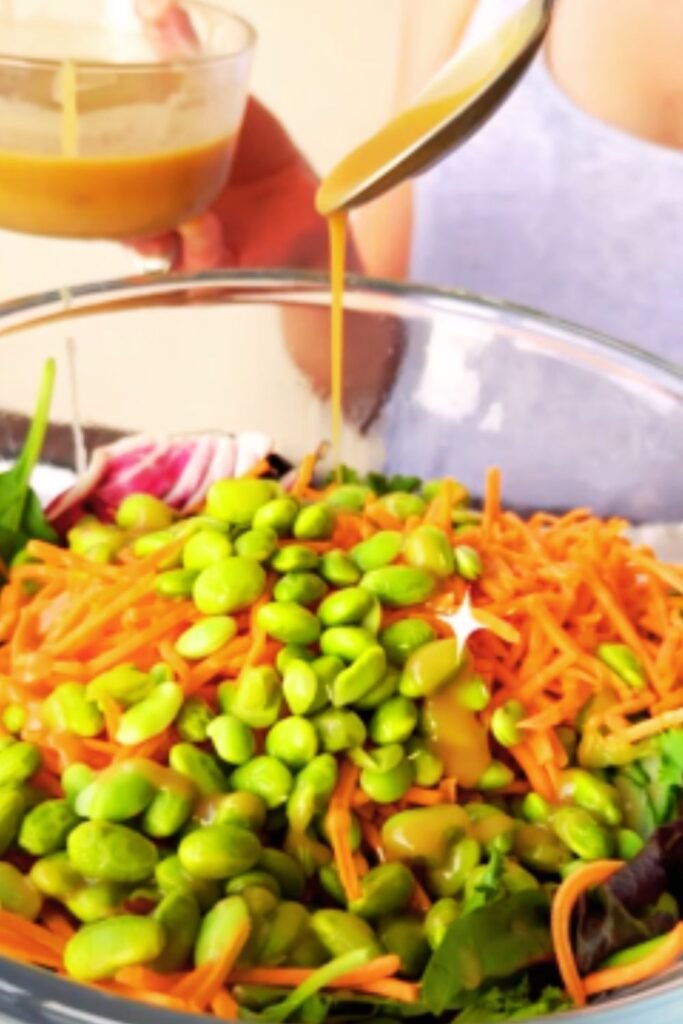
Ingredients
For the Slaw Base:
- 4 cups Napa cabbage, thinly sliced (about half a medium head)
- 2 cups red cabbage, thinly sliced
- 2 large carrots, julienned or shredded
- 1 red bell pepper, thinly sliced
- 1 cup shelled edamame, cooked and cooled
- 1 cup snow peas or sugar snap peas, thinly sliced on the diagonal
- 4 green onions, thinly sliced (white and green parts)
- 1/2 cup fresh cilantro leaves, roughly chopped
- 1/4 cup fresh mint leaves, thinly sliced (optional but recommended)
For the Sesame Dressing:
- 3 tablespoons rice vinegar
- 2 tablespoons toasted sesame oil
- 2 tablespoons neutral oil (grapeseed, canola, or vegetable)
- 1 tablespoon honey or maple syrup
- 1 tablespoon low-sodium soy sauce or tamari
- 1 tablespoon fresh ginger, finely grated
- 1 garlic clove, minced
- 1/2 teaspoon sriracha or 1/4 teaspoon crushed red pepper flakes (optional)
- 1/4 teaspoon kosher salt
- Freshly ground black pepper to taste
For the Toppings:
- 1/3 cup sliced almonds or chopped cashews, toasted
- 2 tablespoons sesame seeds (white or a mix of white and black), toasted
- 1/2 cup crispy wonton strips or crushed ramen noodles
Instructions
- Prepare the vegetables: Wash all produce thoroughly. Using a sharp knife or mandoline, thinly slice the Napa cabbage, red cabbage, and snow peas. Julienne or shred the carrots. Thinly slice the red bell pepper and green onions. Rough chop the cilantro and thinly slice the mint if using.
- Make the dressing: In a small bowl or jar, combine the rice vinegar, toasted sesame oil, neutral oil, honey or maple syrup, soy sauce, grated ginger, minced garlic, sriracha (if using), salt, and pepper. Whisk well or shake the jar until thoroughly combined. Taste and adjust seasoning as needed.
- Toast the nuts and seeds: In a dry skillet over medium heat, toast the almonds or cashews until fragrant and lightly golden, about 3-4 minutes, stirring frequently to prevent burning. Transfer to a plate. In the same skillet, toast sesame seeds until golden, about 1-2 minutes. Set aside to cool.
- Assemble the slaw: In a large mixing bowl, combine all prepared vegetables, edamame, and herbs. Pour about 3/4 of the dressing over the slaw and toss thoroughly to coat. Start with less dressing than you think you’ll need; you can always add more.
- Rest the slaw: For best flavor, allow the slaw to rest in the refrigerator for at least 30 minutes before serving. This gives the vegetables time to slightly soften and the flavors to meld.
- Finish and serve: Just before serving, add most of the toasted nuts, seeds, and crispy wonton strips or ramen noodles. Toss gently to combine. Taste and add more dressing if needed. Garnish with the remaining toppings.
Nutritional Breakdown
One of the many benefits of this Asian Coleslaw is its nutritional profile. Here’s a breakdown of what you’re getting in each serving:
| Nutrient | Amount Per Serving | % Daily Value |
|---|---|---|
| Calories | 187 | – |
| Total Fat | 13g | 17% |
| Saturated Fat | 1.5g | 8% |
| Trans Fat | 0g | – |
| Cholesterol | 0mg | 0% |
| Sodium | 284mg | 12% |
| Total Carbohydrates | 14g | 5% |
| Dietary Fiber | 4g | 14% |
| Sugars | 7g | – |
| Protein | 5g | 10% |
| Vitamin A | – | 120% |
| Vitamin C | – | 85% |
| Calcium | – | 8% |
| Iron | – | 10% |
Values based on a 2,000 calorie diet. Serving size: approximately 1 cup.
Variations to Try
The beauty of this recipe is its flexibility. Here are some of my favorite ways to customize it:
Protein Additions
- Grilled chicken breast, sliced thin
- Seared tofu cubes
- Grilled shrimp
- Leftover roasted salmon, flaked
Vegetable Variations
- Thinly sliced bok choy
- Bean sprouts
- Thinly sliced radishes
- Shredded brussels sprouts
- Diced jicama
Dressing Adjustments
- Add a tablespoon of creamy peanut butter for a Thai-inspired twist
- Use lime juice instead of rice vinegar for a different tang
- Add a dash of fish sauce for more umami depth
- Include a teaspoon of miso paste for complexity
Make-Ahead and Storage Tips
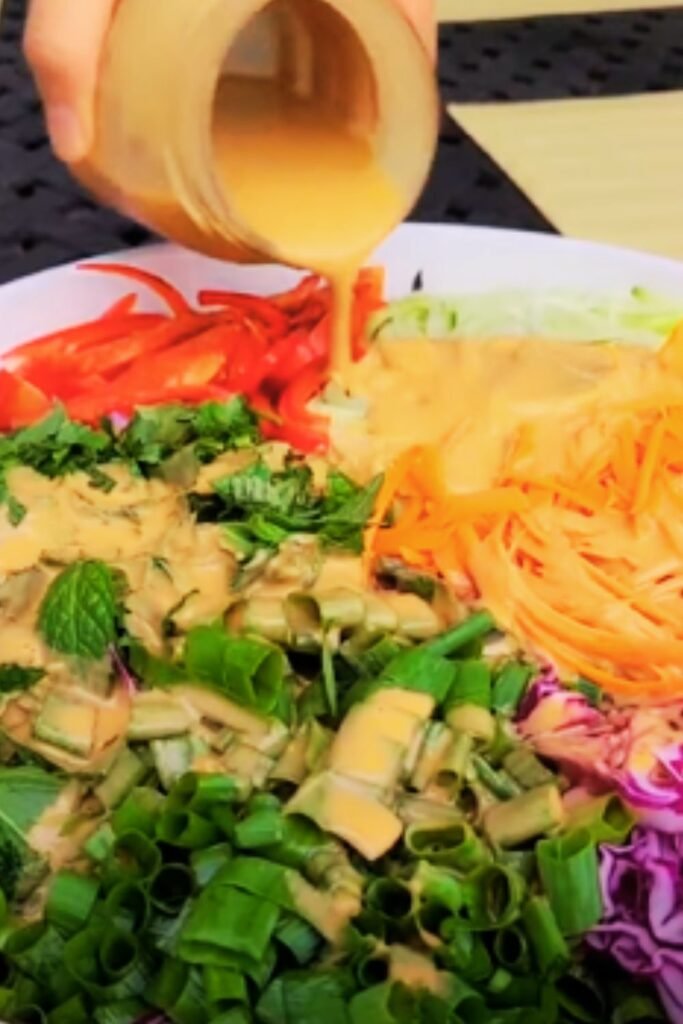
This Asian Coleslaw actually improves with a little time, making it perfect for meal prep. Here’s how to make the most of it:
For Meal Prep:
- Prepare all vegetables and store in an airtight container in the refrigerator.
- Mix the dressing separately and store in a small jar.
- Keep toppings (nuts, seeds, crispy elements) in separate containers at room temperature.
- Combine everything just before eating, or up to 4 hours before if you prefer a slightly softer texture.
Storage Duration:
- Undressed slaw components: Up to 5 days in the refrigerator
- Dressed slaw (without crispy toppings): Up to 3 days
- Assembled slaw with all toppings: Best consumed within 24 hours
- Dressing: Up to 1 week in the refrigerator
Seasonal Adaptations
I love adapting this recipe throughout the year to incorporate seasonal produce:
| Season | Seasonal Additions |
|---|---|
| Spring | Snow peas, radishes, spring onions, asparagus ribbons |
| Summer | Bell peppers, fresh corn kernels, cherry tomatoes |
| Fall | Julienned apples, shredded brussels sprouts, pomegranate seeds |
| Winter | Shredded kale, diced winter squash (roasted and cooled), citrus segments |
Serving Suggestions
This Asian Coleslaw pairs beautifully with so many dishes. Here are my favorite serving combinations:
Main Dish Pairings
- Grilled teriyaki chicken
- Korean BBQ beef
- Miso-glazed salmon
- Crispy tofu with peanut sauce
- Honey-soy glazed pork tenderloin
Serving Styles
- In lettuce cups for a light appetizer
- Alongside a rice bowl
- As a bed for grilled protein
- Stuffed into a wrap with avocado
- As a vibrant side dish for a summer BBQ
Beverage Pairings
- Jasmine iced tea
- Sparkling water with cucumber and mint
- Ginger kombucha
- Coconut water
Troubleshooting Common Issues
Problem: Soggy Slaw
Solution: If your slaw becomes soggy too quickly, try these fixes:
- Salt the cabbage lightly and let it sit for 15 minutes, then rinse and thoroughly dry before proceeding
- Add the dressing just before serving
- Use less dressing initially
- Make sure all vegetables are very dry before combining
Problem: Too Bitter
Solution: Red cabbage can sometimes lend bitterness. Try:
- Soaking sliced red cabbage in cold water for 10 minutes, then draining well
- Adding a touch more honey to the dressing
- Using less red cabbage and more Napa cabbage
Problem: Dressing Separates
Solution: This is normal for oil and vinegar dressings. Simply:
- Shake or re-whisk before adding to the slaw
- Add a small dollop of Dijon mustard to help emulsify
- Blend the dressing ingredients in a blender for better emulsification
Health Benefits
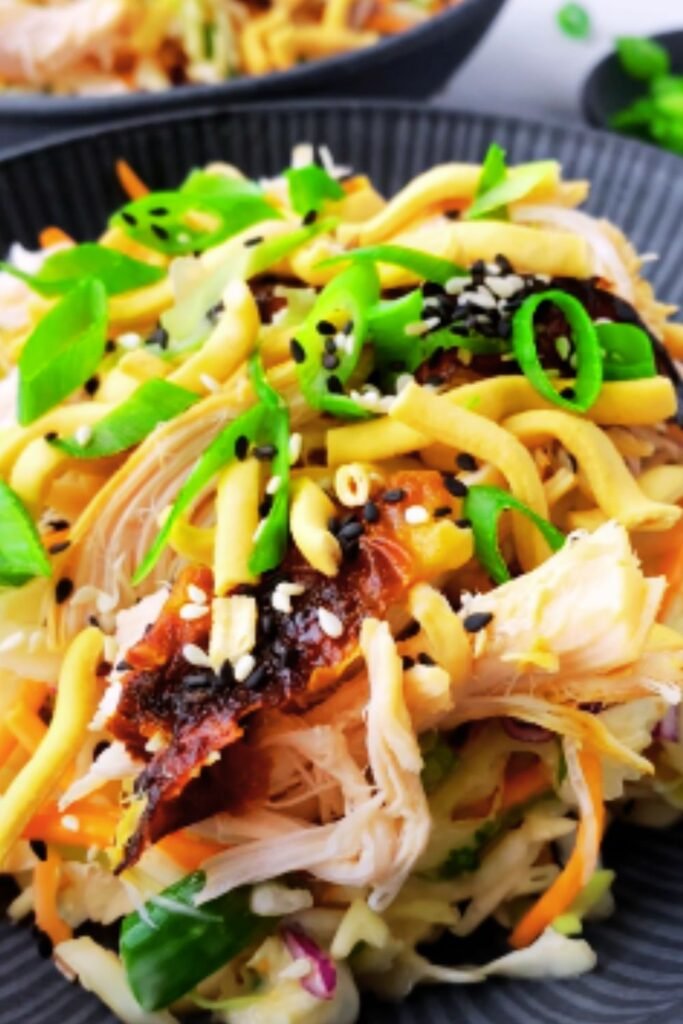
Beyond being delicious, this Asian Coleslaw offers numerous health benefits:
- Rich in antioxidants: The colorful vegetables provide a range of antioxidants that help fight inflammation and oxidative stress.
- High in fiber: Cabbage and other vegetables provide digestive health benefits.
- Good source of vitamins: Particularly vitamins A, C, and K from the diverse vegetable mix.
- Contains heart-healthy fats: From the sesame oil and nuts.
- Probiotics potential: The slight fermentation that occurs as dressed cabbage sits can provide beneficial bacteria.
- Low-calorie satisfaction: The high water and fiber content makes this dish filling despite its modest calorie count.
Cultural Context and History
While this recipe is a fusion creation rather than an authentic dish from any single Asian cuisine, it draws inspiration from several traditions:
- The sesame oil and rice vinegar foundation is common in many East Asian dressings
- The combination of sweet, sour, and savory elements reflects the balanced approach to flavor in many Asian cuisines
- Raw vegetable salads with bright dressings appear across various Asian culinary traditions, from Chinese cold dishes to Japanese sunomono
The American coleslaw, with its cabbage base, merged with these Asian flavor influences creates a cross-cultural dish that honors multiple culinary traditions while creating something new and delicious.
Sustainability Considerations
As someone who cares about sustainable cooking, I try to make environmentally conscious choices when preparing this recipe:
- Choose locally grown cabbage when possible (it’s often available year-round in many regions)
- Look for U.S.-grown edamame to reduce carbon footprint
- Consider making your own crispy toppings from leftover bread or tortillas instead of packaged options
- Use the entire vegetable: cabbage cores can be fermented or used in stocks, and carrot tops can become pesto
- Store leftovers properly to reduce food waste
Questions and Answers
Q: Can I make this slaw gluten-free? Absolutely! Use tamari instead of soy sauce and make sure your crispy toppings are gluten-free. Skip the wonton strips and either use gluten-free ramen noodles or substitute with toasted rice cereal.
Q: How can I make this recipe vegan? This recipe is almost vegan as written – just substitute the honey with maple syrup or agave nectar in the dressing, and you’re all set!
Q: My family doesn’t like spicy food. Can I still make this? Definitely! Simply omit the sriracha or red pepper flakes from the dressing. The slaw will still be flavorful with the ginger, garlic, and sesame elements.
Q: Can I use pre-shredded coleslaw mix to save time? Yes, you can use a pre-shredded mix as your base. Look for one with both green and red cabbage plus carrots. Then add the other vegetables (bell peppers, edamame, snow peas) separately to enhance the flavor and nutritional profile.
Q: How far in advance can I make this for a party? For the best texture and flavor, I recommend preparing all components separately up to 2 days ahead: vegetables sliced and stored in airtight containers, dressing mixed and refrigerated, and toppings prepared and stored at room temperature. Combine the vegetables and dressing up to 4 hours before serving, adding the crispy toppings just before presenting.
Q: Is there a substitute for sesame oil if I have an allergy? If you have a sesame allergy, you can substitute with perilla oil or walnut oil for a different but complementary nutty flavor. In a pinch, extra virgin olive oil will work, though the flavor profile will be noticeably different. Add a tablespoon of tahini to the dressing if you’re not allergic to it to maintain that nutty flavor.
Q: What can I do with leftover Asian Coleslaw? Leftover slaw makes a fantastic filling for Vietnamese-inspired summer rolls, can be added to broth with noodles for a quick soup, used as a topping for tacos, or folded into a stir-fry during the last minute of cooking.
Final Thoughts
Asian Coleslaw with Sesame Dressing has become my go-to side dish for so many occasions, from casual family dinners to potlucks and dinner parties. Its vibrant appearance makes any meal feel special, while its nutritional profile ensures I’m serving something that’s as beneficial as it is delicious.
What I find most remarkable about this recipe is how it manages to be simultaneously refreshing and satisfying. The combination of crisp vegetables, nutty sesame, and bright herbs creates a complexity that belies the dish’s simplicity.
Whether you’re looking to add more vegetables to your diet, need a make-ahead side dish for busy weeknights, or want to impress guests at your next gathering, this Asian Coleslaw delivers on all fronts. I hope it becomes a favorite in your recipe collection just as it has in mine!
